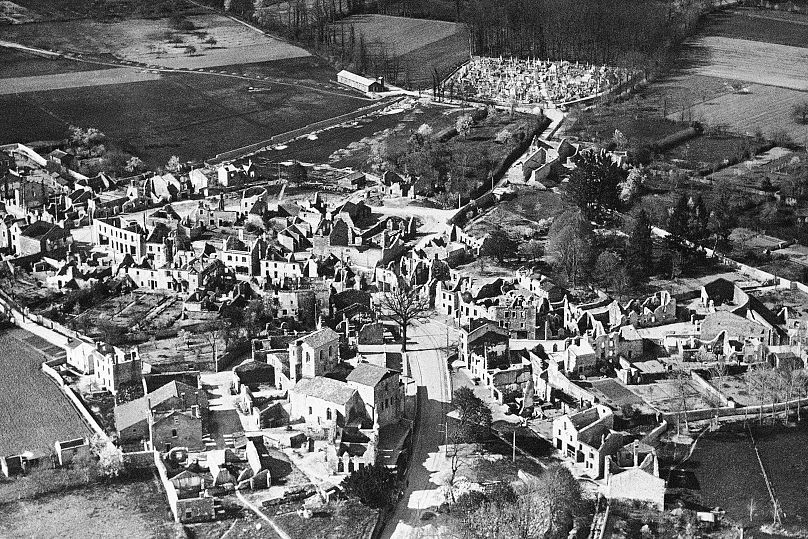On June 10, 1944, troops from the SS "Das Reich" division brutally killed 642 villagers. They were herded into barns and a church before the town was set on fire.
Vandals scrawled graffiti on a memorial wall in a village that was the site of the biggest massacre of French civilians by the Nazis during World War II, calling the atrocity a "lie".
President Emmanuel Macron promised on Saturday that "everything would be done" to find those responsible.
The graffiti on the Centre for Remembrance in Oradour-Sur-Glane, near Limoges in central France, was discovered on Friday.
The word "Lie" was scrawled on the wall above the crossed-out words "Martyr Village".
"When the word martyr is crossed out and the word liar and the name of a revisionist is put in its place, then you understand why we are shocked," said Philippe Lacroix, mayor of Oradour-Sur-Glane.
On June 10, 1944, troops from the SS "Das Reich" division brutally killed 642 villagers. They were herded into barns and a church before the town was set on fire.
The massacre occurred four days after the Allied D-Day landings in Normandy. The killings were believed to have been ordered in retaliation for the kidnapping of a German soldier by the French Resistance.
A new village was built but the ruins of the old town have been left untouched with burned-out cars and abandoned buildings as a testimony to Nazi horrors.
An investigation has been opened to find those responsible.
Interior Minister Gerald Darmanin denounced the “abject filth” in a Friday night tweet while Prime Minister Jean Castex said the graffiti “dirties the memory of our martyrs.”












